How Manhattan prosecutors’ ‘zombie’ case led to Trump indictment
Former President Trump faces an indictment following a sprawling investigation by Manhattan prosecutors that ultimately returned to how it began: a hush payment made to an adult film star ahead of the 2016 election.
The years-long probe kicked off with an investigation of the hush payment but later shifted to other areas of inquiry involving Trump’s businesses and executive compensation.
Only in recent months has the Manhattan district attorney’s office come back to the infamous $130,000 payment to adult film star Stormy Daniels. Prosecutors referred to it as the “zombie” case because it was once closed under a former Manhattan district attorney.
Here’s a look back at how we arrived at the indictment — for the first time in history — of a former U.S. president:
July 2006: Alleged affair begins

Stormy Daniels arrives for the 49th Annual Grammy Awards in Los Angeles, Feb. 11, 2007. (AP File Photo/Matt Sayles)
Daniels, whose real name is Stephanie Clifford, says she first met Trump at a July 2006 Lake Tahoe golf tournament a decade prior to receiving the hush payment at the center of the case.
Daniels claims Trump invited her to his hotel suite, where they had sex and Trump floated Daniels being a contestant on “Celebrity Apprentice.” Trump has repeatedly denied having a sexual relationship with her.
Daniels says she remained in touch with Trump for roughly a year, but they never had sex after their first meeting. Daniels told “60 Minutes” that in August 2007, Trump indicated he had not been able to secure a spot for her on his show.
May 2011: Daniels agrees to tell story, but it isn’t published

Adult film actress Stormy Daniels appears during an autograph signing for Wicked Pictures at the 2012 AVN Adult Entertainment Expo. (Ethan Miller/Getty Images)
Daniels agreed to tell her story to the In Touch Weekly magazine in May 2011. But the magazine didn’t run the story because Michael Cohen, Trump’s fixer and personal attorney who later made the hush payment, reportedly threatened to sue the company after learning about the interview.
Daniels told “60 Minutes” that while she was in a Las Vegas parking lot with her infant daughter, a man also approached and threatened her.
“A guy walked up on me and said to me, ‘Leave Trump alone. Forget the story.’ And then he leaned around and looked at my daughter and said, ‘That’s a beautiful little girl. It’d be a shame if something happened to her mom.’ And then he was gone,” Daniels told host Anderson Cooper.
The magazine ultimately published their interview years later once the purported affair became public knowledge.
October 2016: Cohen makes hush payment
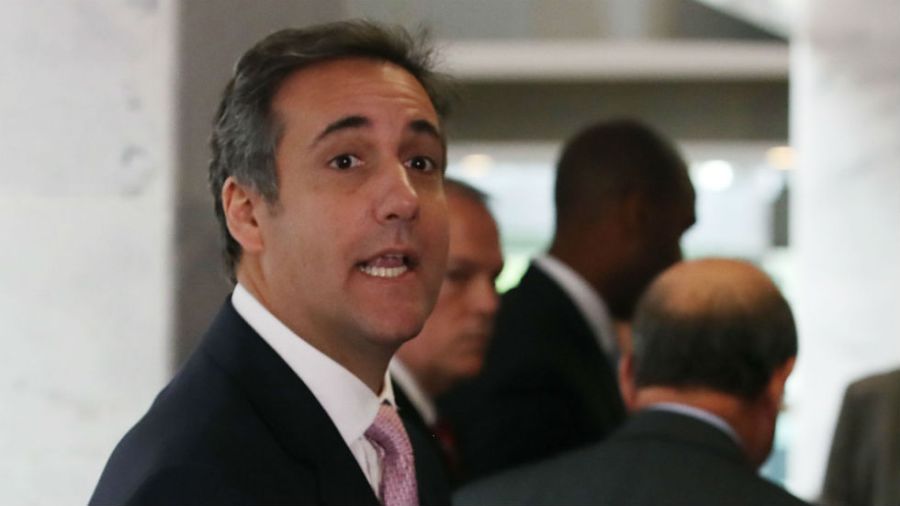
Michael Cohen paid Stormy Daniels $130,000 less than two weeks before the 2016 presidential election in exchange for her signing a non-disclosure agreement. (Getty)
Daniels again sought to speak publicly about her story ahead of the 2016 presidential election.
That led Cohen, less than two weeks before Election Day, to pay Daniels $130,000 in exchange for her signing a non-disclosure agreement.
David Pecker, the then-publisher of the National Enquirer, had purchased the rights to multiple embarrassing stories about Trump during his campaign without ever planning to publish them, a practice known as “catch and kill.”
Pecker’s company paid Playboy model Karen McDougal $150,000 for the rights to her story about an alleged affair with Trump in August 2016. Trump has denied that affair as well.
But when Daniels was shopping her story, Pecker and an editor at the paper reportedly declined to buy Daniels’s silence, and they instead told Cohen to arrange a payment directly.
Using a home equity line of credit to secure the funds, Cohen wired the payment to Daniels’s lawyer on Oct. 27, 2016, through “Essential Consultants,” a company Cohen incorporated days earlier, according to federal court filings. Cohen says he did so at Trump’s direction.
February 2017: Cohen begins receiving reimbursement
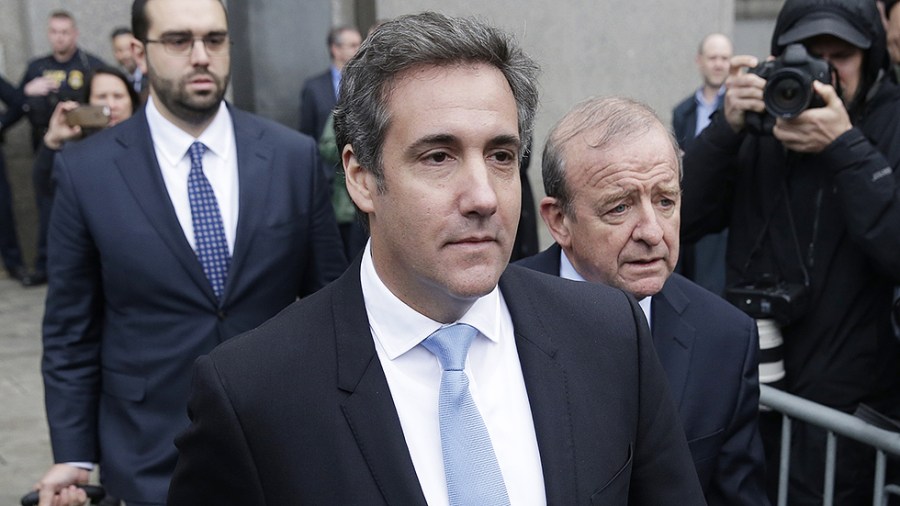
In exchange for securing the hush money payment, Trump Organization executives determined that Michael Cohen would be paid a total of $420,000 in 12 month installments. (UPI)
Roughly when Trump took office, Cohen began seeking Trump’s reimbursement for the hush payment and other work. Cohen sent his first invoice on Feb. 14, 2017, according to federal court filings.
Trump Organization executives determined that Cohen would be paid a total of $420,000 in 12 monthly installments. Each month, Cohen sent in an invoice requesting $35,000 “[p]ursuant to [a] retainer agreement,” court documents indicate
The first invoice was approved the same day Cohen submitted it, and he received additional monthly payments over the next year.
January 2018: Hush payment goes public

The hush money payment story went public in the early days of 2018. (Getty)
On Jan. 12, 2018, the Wall Street Journal broke the story of the hush payment.
“Trump Lawyer Arranged $130,000 Payment for Adult-Film Star’s Silence,” the headline read.
February 2018: Cohen admits to payment
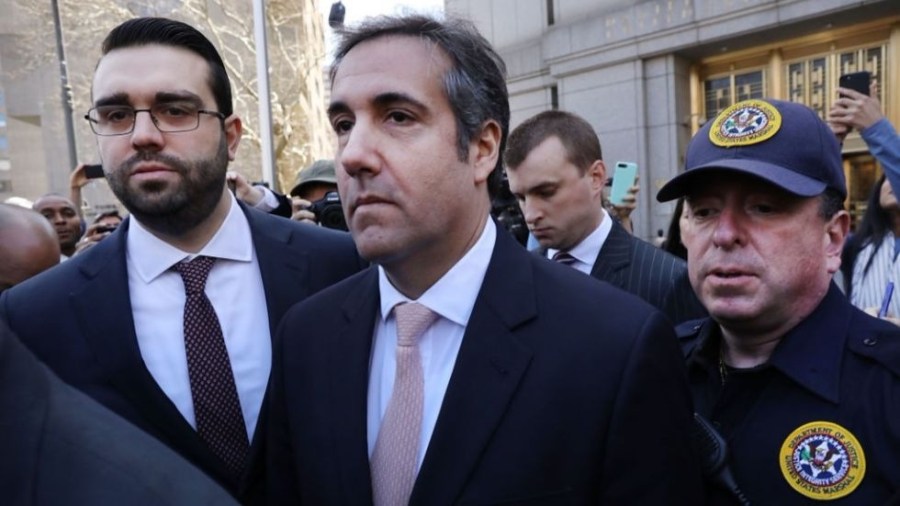
Michael Cohen initially claimed that he paid Stormy Daniels out of his own pocket. (Getty)
Cohen on Feb. 13, 2018, acknowledged making the payment to Daniels to The New York Times, but Cohen at the time claimed he did it out of his own pocket.
“Neither the Trump Organization nor the Trump campaign was a party to the transaction with Ms. Clifford, and neither reimbursed me for the payment, either directly or indirectly,” Cohen said.
March 2018: Daniels sues Cohen
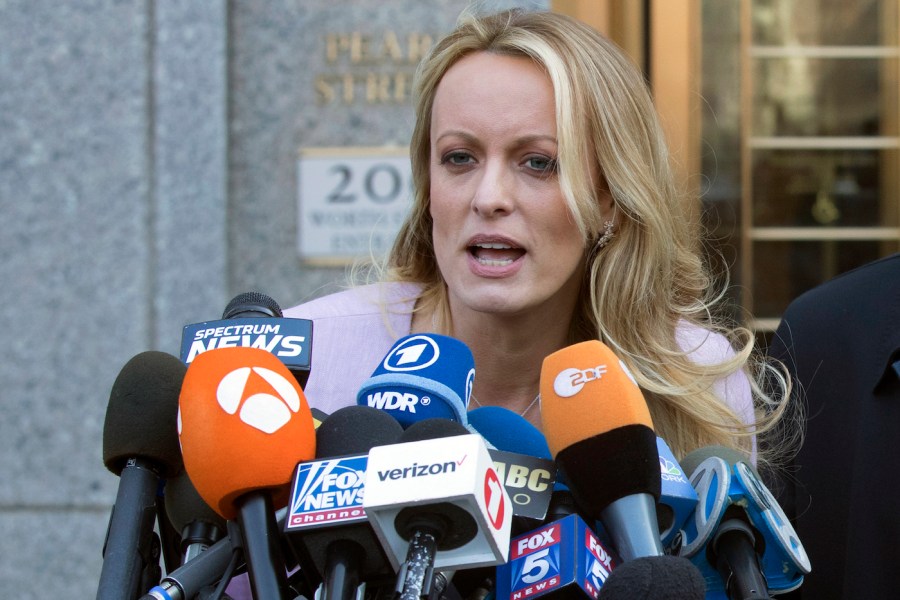
Adult film actress Stormy Daniels speaks outside federal court in New York on April 16, 2018. Daniels, whose real name is Stephanie Clifford, said she had a one-night-stand with President Trump in 2006. (AP File Photo/Mary Altaffer)
Daniels on March 6, 2018, sued Cohen to void the nondisclosure agreement she signed in exchange for the payment. In the weeks following, she filed separate defamation suits against both Cohen and Trump.
“To be clear, the attempts to intimidate Ms. Clifford into silence and ‘shut her up’ in order to ‘protect Mr. Trump’ continue unabated,” the first complaint read.
Daniels was represented by attorney Michael Avenatti, who was later found guilty of defrauding Daniels out of thousands of dollars in her book deal.
April 2018: Trump denies knowledge of payment
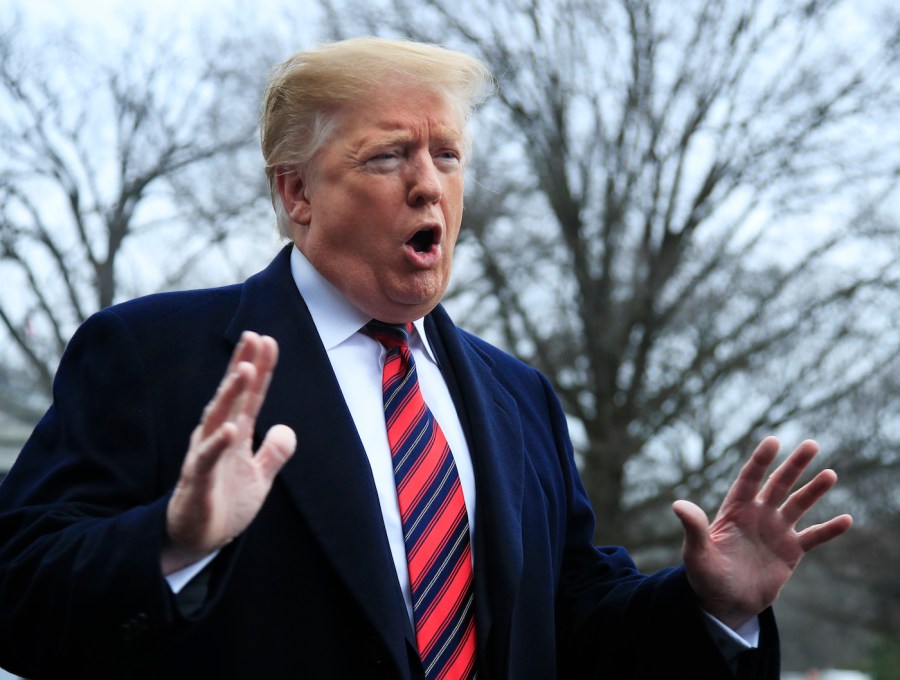
President Donald Trump speaks to reporters on Jan. 19, 2019, after a federal judge threw out a lawsuit against the president by adult film actress Stormy Daniels that sought to tear up a hush-money settlement about their alleged affair. (AP File Photo/Manuel Balce Ceneta)
On April 5, 2018, Trump walked to the press cabin aboard Air Force One to speak with reporters when he was asked if he knew about the hush payment.
“No. No. What else?” Trump responded, breaking his silence nearly three months after the Wall Street Journal’s story.
When asked if he knew where Cohen got the money, he said, “No, I don’t know. No.”
The Justice Department was criminally investigating Cohen at the time and searched his home four days later.
August 2018: Cohen pleads guilty in federal court

Michael Cohen walks into federal court with family members Dec. 12, 2018, in New York as he arrived for sentencing following a guilty plea for lying to Congress, campaign finance violations and other crimes. (AP File Photo/Craig Ruttle)
After months of investigation, Cohen on Aug. 21, 2018, pleaded guilty in federal court to eight counts, including charges of bank fraud, tax fraud and campaign finance law violations.
Some charges were unrelated to the Daniels payment, but Cohen pleaded guilty to one count of making an excessive campaign contribution in connection with the hush money.
Cohen says he made the payment at the president’s direction, but the Justice Department declined to prosecute Trump.
Two days after the guilty plea, The New York Times reported that the Manhattan District Attorney Cyrus Vance Jr. (D) had begun scrutinizing the hush payment.
May 2021: DA convenes first grand jury after broadening investigation

Manhattan District Attorney Cyrus Vance Jr.‘s probe focused on the Trump Organization’s broader finances. (Getty)
On May 25, 2021, reports first emerged that Vance’s office had empaneled a grand jury in state court to hear evidence in his probe, which had expanded beyond the hush payment.
Vance was probing the Trump Organization’s broader finances, including perks given to executives and whether property values were improperly manipulated for loan and tax benefits.
The first grand jury would ultimately expire after six months, but Vance then empaneled a second jury to hear more evidence.
January 2022: Bragg takes over as DA

Manhattan District Attorney Alvin Bragg speaks during the unveiling of the Gate of the Exonerated along a Central Park perimeter wall in New York City on Dec. 19, 2022. (AP File Photo/Ted Shaffrey)
Democrat Alvin Bragg, a former federal prosecutor, succeeded Vance on Jan. 1, 2022, as the second grand jury continued meeting.
Vance had announced months earlier that he would not run for re-election as district attorney.
An eight-way Democratic primary ensued. Bragg, who ran on vowing to make progressive reforms on criminal justice, emerged victorious and went on to become Manhattan’s first Black district attorney.
Bragg received significant attention during his first weeks in office, but not for the Trump investigation.
Bragg wrote a “Day One” memo instructing his office to not prosecute certain low-level offenses. The memo led to relentless attacks from Republicans, who accused Bragg of being soft on crime, and he ultimately revised the policies.
February 2022: Two top prosecutors resign
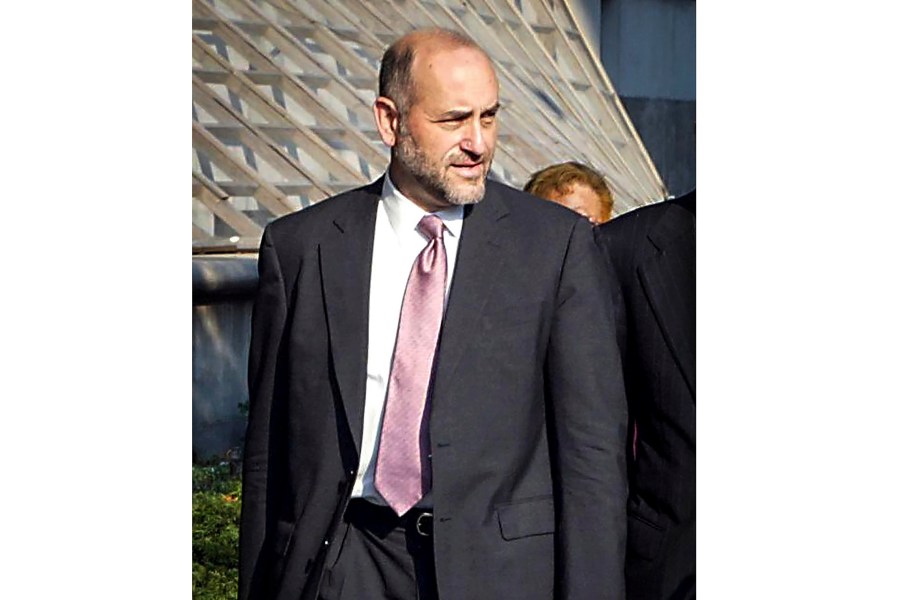
Attorney Mark Pomerantz arrives at Federal Court in New York on Aug. 12, 2002. Pomerantz writes in his new book, “People vs. Donald Trump: An Inside Account,” that then-District Attorney Cyrus Vance Jr. authorized him in December 2021 to seek Trump’s indictment and laments friction with the new D.A. Alvin Bragg that put that plan on ice. (AP File Photo/David Karp)
Mark Pomerantz and Carey Dunne, two top prosecutors on the Trump investigation, resigned in February 2022 over disagreements with Bragg’s reluctance to seek an indictment for Trump from the second grand jury.
Pomerantz’s memoir, which was released last month, accused Bragg of mismanaging the Trump investigation and being “distracted” by the memo criticism.
“The district attorney agreed and authorized the new prosecution. But then the district attorney’s office went through one of its very infrequent regime changes. The new regime decided that Donald Trump should not be prosecuted, and the investigation faltered,” Pomerantz wrote.
August 2022: Trump Organization CFO pleads guilty

The Trump Organization’s former Chief Financial Officer Allen Weisselberg arrives at court on Aug. 12, 2022, in New York. (AP File Photo/John Minchillo)
After opting against indicting Trump, Bragg moved ahead with the criminal tax investigation of the Trump Organization, which involved off-the-books perks given to executives.
On Aug. 18, 2022, Bragg secured a guilty plea from Allen Weisselberg, the company’s ex-CFO.
Weisselberg pleaded guilty to 15 counts and agreed to testify against the Trump Organization in return for a shortened, five-month sentence. But he reportedly declined to turn on Trump himself.
The Trump Organization was found guilty in December in connection with the scheme.
January 2023: Hush payment reemerges
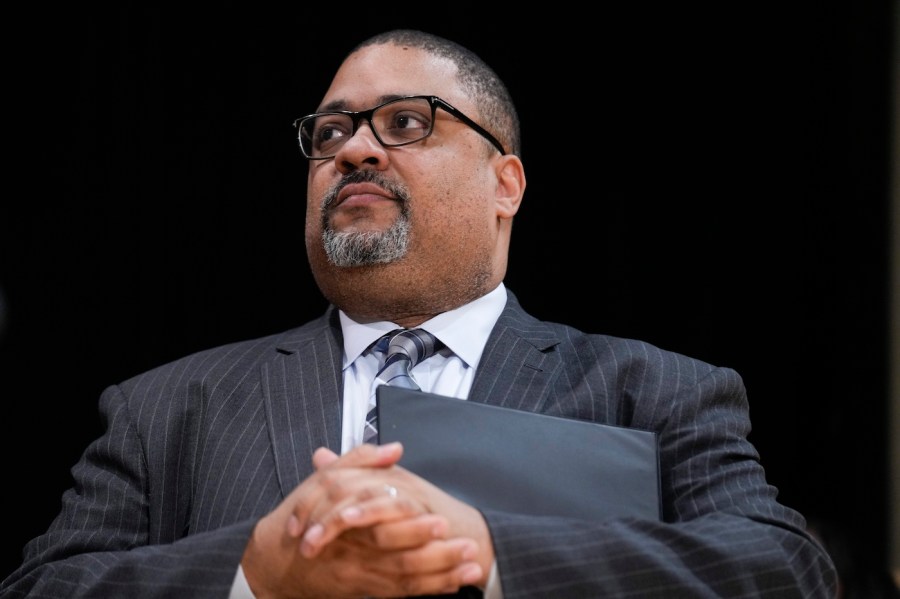
Manhattan District Attorney Alvin Bragg participates in a news conference in New York on Feb. 7, 2023. (AP File Photo/Seth Wenig)
On Jan. 30, The New York Times reported that Bragg’s office had returned to Trump’s involvement in the hush payment and empaneled a new grand jury to hear evidence.
The probe by Manhattan prosecutors had fallen into the background following the departues of Pomerantz and Dunne, with the former president also facing legal battles over his handling of classified documents, the 2020 election and the Jan. 6, 2021, Capitol riot.
But the news quickly put the investigation back into the spotlight. Pomerantz indicated prosecutors referred to it as the “zombie” case because it had faded but never died.
In the weeks following, reports began trickling out about the proceedings and the witnesses who appeared before the grand jury as it became clear Bragg was moving toward an indictment.
Updated 9:46 a.m. March 31
Copyright 2023 Nexstar Media Inc. All rights reserved. This material may not be published, broadcast, rewritten, or redistributed. Regular the hill posts







